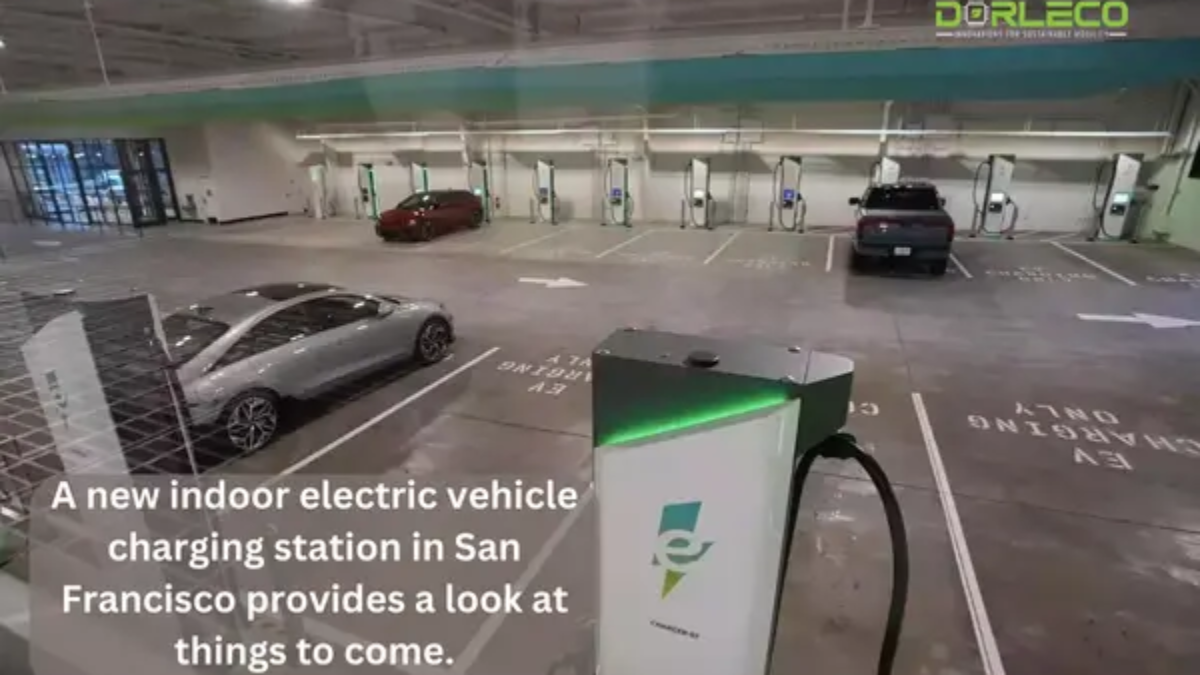The 20-plug direct-current fast-indoor electric vehicle charging station is part of a trend toward more aesthetically pleasing neighborhood stations, intended to help EV owners who cannot charge at home and commuters or visitors running short on power. It opens for business this Friday near downtown San Francisco.
Electrify America is set to establish an indoor electric vehicle charging station a few blocks from the San Francisco-Oakland Bay Bridge, which will allow drivers to unwind in a lounge while their electric vehicle batteries are being charged.
The 20-plug direct-current fast-indoor electric vehicle charging station is part of a trend toward more aesthetically pleasing neighborhood stations, intended to help EV owners who cannot charge at home and commuters or visitors running short on juice. It opens for business on Friday near downtown San Francisco.
It’s also intended to calm potential EV purchasers’ concerns that there won’t be enough indoor electric vehicle charging stations or that they won’t have a safe location to wait while their cars charge—a process that takes significantly longer than filling up with gas. The United States’ EV sales growth is slowing down due to similar worries among prospective consumers.
Tesla is currently constructing a drive-in restaurant, movie theater, and charging station on Santa Monica Boulevard in Los Angeles. Mercedes’ U.S. offices are located close to Atlanta and feature an inside lounge in addition to an outdoor station. As part of a USD 1 billion investment, the corporation intends to build at least 400 more to deploy 2,500 charging plugs by the end of the decade, mostly along the coast. Lounges will be available at a few stations. The others will be alliances with shopping centers or travel agencies.
Energize Robert Barrosa, CEO of the firm, stated that America’s inside station is meant to draw in individuals who might be wary of purchasing an EV, particularly those who live in apartments in the surrounding South Market neighborhood.
“This is that big, indoor, premium experience that makes it enticing to say, ‘Hey, I can do this,'” Barrosa stated.
Convenience store chains have installed charging stations outside their establishments and provide food, bathrooms, and round-the-clock services to electric vehicle drivers.
However, Barrosa stated that stations featuring more luxurious inside areas, such as Wi-Fi and cozy couches, are designed to be visited for longer periods than a normal gas station fill-up. He stated that the San Francisco station will have a staff member on duty around the clock to manage lines, provide security, and respond to inquiries from owners.
According to EV owners, a fast-charger typically needs to run a battery from 10% to 80% charge in roughly 20 minutes at the very least. That is in contrast to the few minutes it takes to fill up a car at a gas station.
“We refer to it as 30-minute retail instead of two-minute retail,” stated Rick Wilmer, CEO of ChargePoint, a business that creates and manages charging stations for eateries, shops, and residential complexes that utilize them to draw clients.
According to Barrosa, convenience stores frequently only have room for a few charging ports, so EV drivers may have to wait in line. Owners feel more confident when they have twenty 350 kW fast-charging ports indoors, especially if they live nearby.
Barrosa asserts that “people want speed and power.” “People want the technology.”
Additionally, indoor stations would make charging easier in inclement weather—a problem that recently surfaced when Midwest temperatures dropped below zero.
Bruce Westlake, the president of the Eastern Michigan Electric Vehicle Association and a Tesla owner, is still one of the doubters. He stated that he doesn’t believe most EV buyers will find indoor electric vehicle charging stations with additional facilities to be very appealing.
Kevin Smith, a Murfreesboro, Tennessee, Tesla owner, continued, “They’re kind of a cool novelty thing, but I don’t see them being mainstream.” Convenience stores are a common source of EV charging for Smith when he travels.
“People just want a snack and a restroom,” he stated.
Smith expressed his preference for Electrify America, the nation’s largest network for fast charging of electric vehicles, to simply construct more stations and improve their dependability.
In the US, there are more than 61,000 charging stations equipped with more than 163,000 connectors. The majority are slower chargers that take hours to fully charge cars.
With over 24,000 plugs and over 2,100 stations, Tesla boasts the largest fast-charging network. However, not all EVs can use it, at least not yet. There are more than 4,000 charging ports and 900 stations on Electrify America.
With the help of USD 5 billion from the 2021 infrastructure law, President Joe Biden has set a national goal of 500,000 indoor electric vehicle charging stations. The goal is to install or improve chargers along 75,000 miles (120,000 kilometers) of roadway.
According to Westlake, he typically arranges his charging breaks to coincide with nearby eateries and commercial establishments while on the road. He will go grocery shopping while charging if it’s a local charge.
However, he believes that communities with larger “destination” indoor electric vehicle charging stations are a huge benefit for apartment residents who don’t have access to charging at home.
Westlake also values having 24-hour service, particularly for charging at night. Occasionally establishments near charging stations close, leaving nowhere to go while charging.

